The Royal Air Force and Women’s Royal Air Force were founded 1 April 1918, by combining the Royal Flying Corps and Royal Naval Air Service. A very Happy Anniversary to our Cousins across the Atlantic!
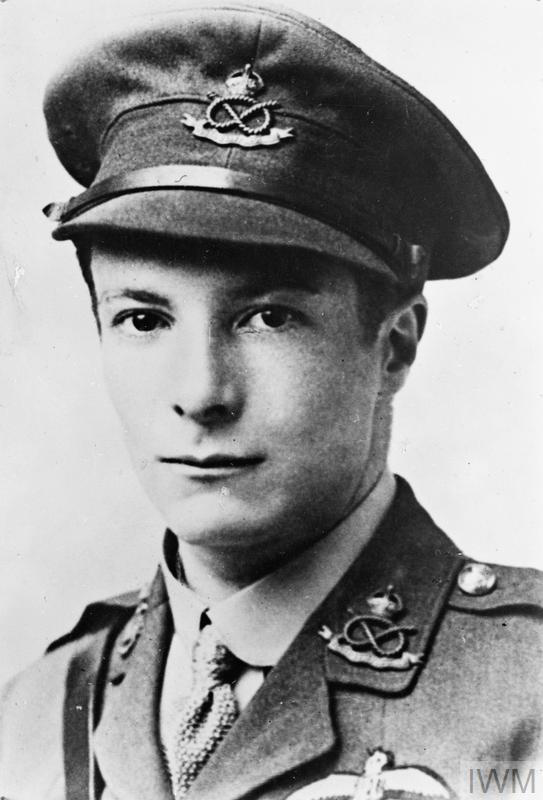
30 March 1918: Near Borgo del Molino, Italy, Lieutenant Alan Jerrard, No. 66 Squadron, Royal Flying Corps,¹ was flying a Sopwith Camel, serial number B5648, while on an intruder mission with two other pilots, Captain Peter Carpenter, M.C., and Lieutenant Harold Ross Eycott-Martin. Jerrard engaged a group of Kaiserliche und Königliche Luftfahrtruppen (Austrian Air Force) Albatros D.III fighters:
1st May, 1918
His Majesty the KING has been graciously pleased to award the Victoria Cross to the undermentioned officers of the Royal Air Force, for services displaying outstanding bravery:—
Lt. Alan Jerrard, Royal Air Force (formerly of the South Staffordshire Regiment)
When on an offensive patrol with two other officers he attacked five enemy aeroplanes and shot down one in flames, following it down within one hundred feet of the ground.
He then attacked an enemy aerodrome from a height of only fifty feet from the ground, and, engaging single-handed some nineteen machines, which were either landing or attempting to take off, succeeded in destroying one of them, which crashed on the aerodrome. A large number of machines attacked him, and whilst thus fully occupied he observed that one of the pilots of his patrol was in difficulties. He went immediately to his assistance, regardless of his own personal safety, and destroyed a third enemy machine.
Fresh enemy aeroplanes continued to rise from the aerodrome, which he attacked one after another, and only retreated, still engaged with five enemy machines, when ordered to do so by his patrol leader. Although apparently wounded, this very gallant officer turned repeatedly, and attacked single-handed the pursuing machines, until he was eventually overwhelmed by numbers and driven to the ground.
Lt. Jerrard had greatly distinguished himself on four previous occasion, within a period of twenty-three days, in destroying enemy machines, displaying bravery and ability of the very highest order.
—Third Supplement to The London Gazette of Tuesday, Number 30663, at Page 5287
The Victoria Cross is the United Kingdom’s highest award for gallantry. It is awarded “for most conspicuous bravery, or some daring or pre-eminent act of valour or self-sacrifice, or extreme devotion to duty in the presence of the enemy.”
Both Captain Carpenter and Lieutenant Eycott-Ross were awarded the Military Cross for their actions on this date. Lieutenant Jerrard was presented the Victoria Cross by George V at Buckingham Palace, 5 April 1919.
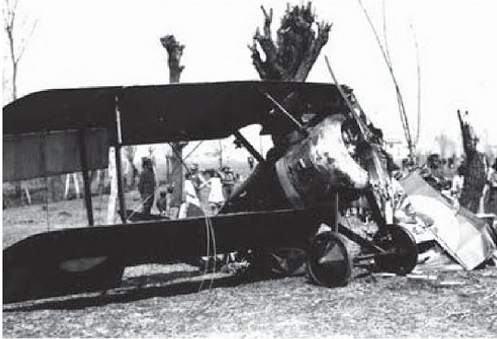
Jerrard’s Sopwith Camel had been shot down by Hauptmann Benno Fiala Ritter von Fernbrugg, an Austrian Air Force ace. This was von Fernbrugg’s fourteenth aerial victory.
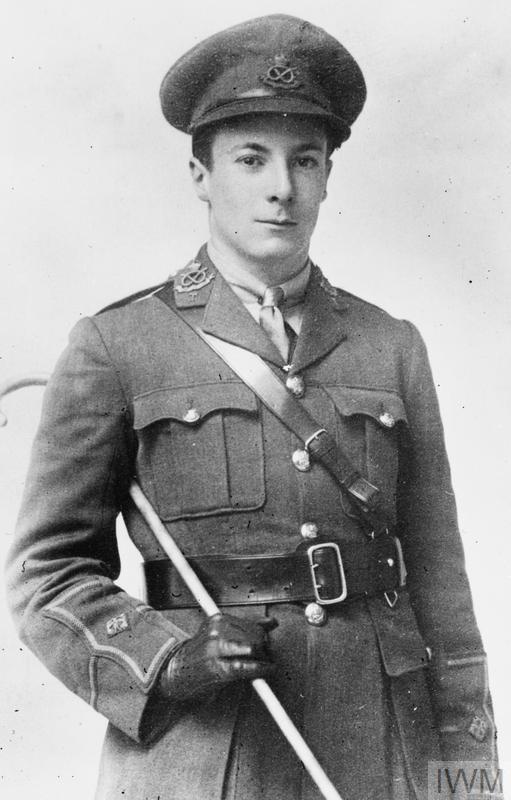
Alan Jerrard was born 3 December 1897 at Ladywell, Lewisham, southeast London, England. He was the son of Herbert Jerrard, at that time the master of mathematics at St. Dunstan’s College, Catford, London, and Jane Remington Hobbs Jerrard. He attended Bishop Vesey’s Grammar School, Sutton Coldfield, West Midlands, where his father was now headmaster. He went on to Oundle School in Northamptonshire, then attended the University of Birmingham.
In 1915, Jerrard joined the British Army. He was appointed a cadet with the Birmingham University Contingent, Senior Division, officers Training Corps. He was commissioned as a second lieutenant in the South Staffordshire Regiment, 2 January 1916.
On 16 August 1916, Second Lieutenant Jerrard transferred to the Royal Flying Corps to be trained as a fighter pilot. He completed flight training 14 June 1917. He received advanced training at London Colney. Jerrard was promoted to lieutenant and was assigned to No. 19 Squadron, 24 July 1917.
Lieutenant Jerrard was flying a SPAD S.VII on his second combat patrol, 2 August 1917, near St. Marie Cappel. He attacked an enemy convoy, but then his engine failed. He crashed and was seriously injured. Rescued by Allied soldiers, he was initially hospitalized in France before being returned to England to recover.
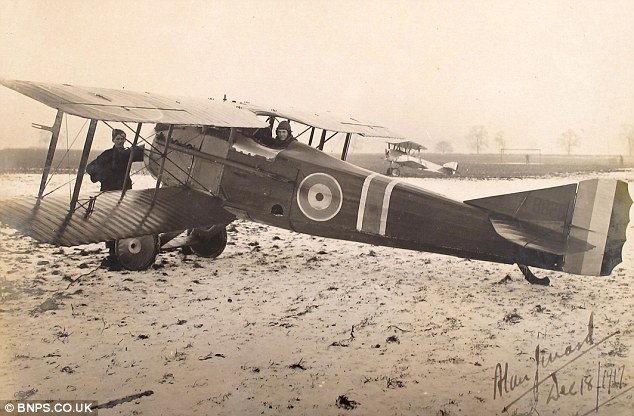
Lieutenant Jerrard was able to return to duty after six months. He joined No. 66 Squadron in Italy, 22 February 1918.
After being shot down on 30 March, Lieutenant Jerrard was held by Austria as a Prisoner of War at Salzburg. He was later able to escape and return to Allied lines.
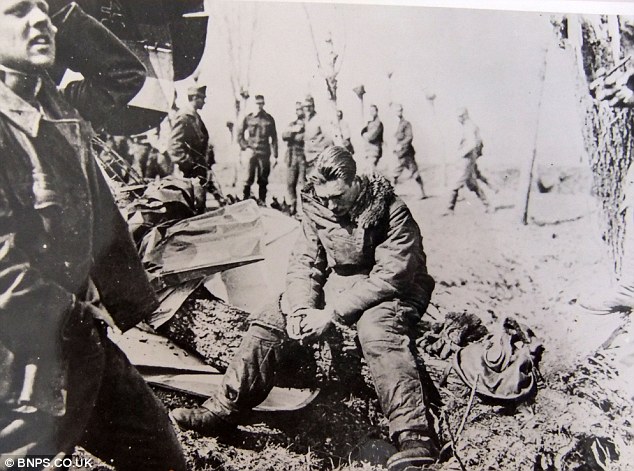
Lieutenant Jerrard was officially credited with destroying three Albatros D.IIIs on 30 March 1918. In the previous weeks, he had also shot down two Aviatik Berg D.Is, an observation balloon, and another Albatross D.III.
In addition to the Victoria Cross, Lieutenant Jerrard was awarded the Medaglia di bronzo al Valore Militare (Bronze Medal for Military Valor) by the Kingdom of Italy. Imperial Russia awarded him the Imperatorskiy orden Sv. Anny (The Imperial Order of St. Anne, Third Degree, with Swords).
Lieutenant Jerrard remained in the Royal Air Force following the Armistice. He was granted a Permanent Commission as a Flying Officer, effective 1 August 1919. He served with a detachment at Murmansk, Russia, in 1919.
On 1 January 1926, Flying Officer Jerrard was promoted to the rank of Flight Lieutenant.
In June 1926, Flight Lieutenant Jerrard married Mrs. Eliza M.K. Low (née Eliza Maria Kathleen Woods), in St. Giles, Westminster, London.
Flight Lieutenant Jerrard retired from the Royal Air Force after eighteen years of military service. He was placed on the retired list on account of ill health, 24 August 1933.
Flight Lieutenant Alan Jerrard, V.C., died at Lyme Regis, Devon, 14 May 1968. His ashes were interred at the Uxbridge and Hillingdon Cemetery, Middlesex, along with those of his wife Eliza Maria Kathleen, who had died in 1961.
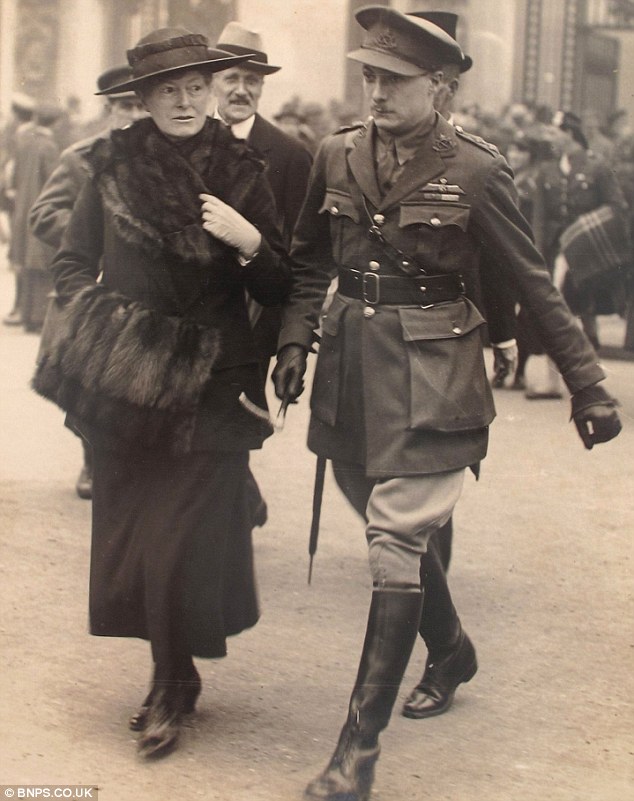
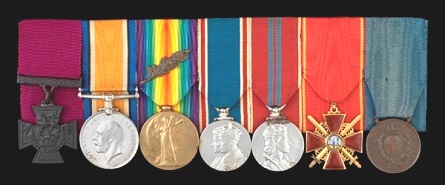
¹ The Royal Flying Corps and the Royal Naval Air Service were combined to create the Royal Air Force, 1 April 1918.
© 2018, Bryan R. Swopes
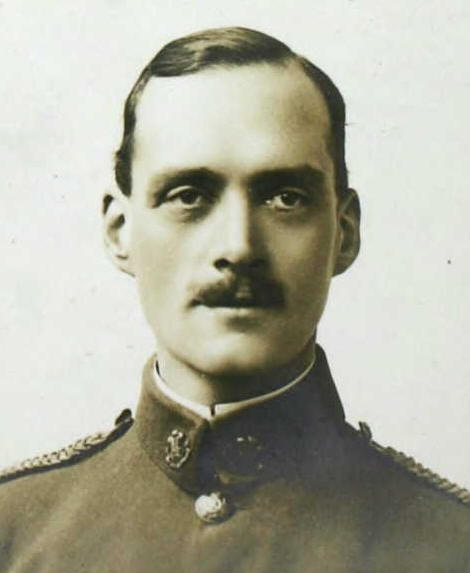
22 November 1913: Captain Charles Alexander Holcombe Longcroft, Welsh Regiment, British Army, attached to No. 2 Squadron, Royal Flying Corps, as a flight commander, flies a Royal Aircraft Factory B.E.2.a from Montrose, Scotland, non-stop to Farnborough, Hampshire, England. The distance covered was approximately 630 miles (1,014 kilometers).¹
Captain Longcroft, accompanied by Colonel Frederick Hugh Sykes, Commandant of the Military Wing, departed Montrose Aerodrome at 8:55 a.m., flying B.E.2.a number 218. He passed York at 11:55 a.m., then continued on to Portsmouth, and next to Farnborough, where he landed at 4:10 p.m. The total duration of the flight was 7 hours, 15 minutes, at an average speed of approximately 86.9 miles per hour (139.9 kilometers per hour).
At the time, British newspapers speculated as to whether Captain Longcroft had established a new world record (or at least, a British national record), but the Fédération Aéronautique Internationale does not recognize any records attributed to Longcroft. On 13 October 1913, Auguste Seguin of France had established an FAI world record for distance of 1021,20 kilometers (634.54 statute miles) at Korobcheevo, Russia.²
For this flight, Captain Longcroft was awarded the first Britannia Trophy of the Royal Aero Club of Great Britain.
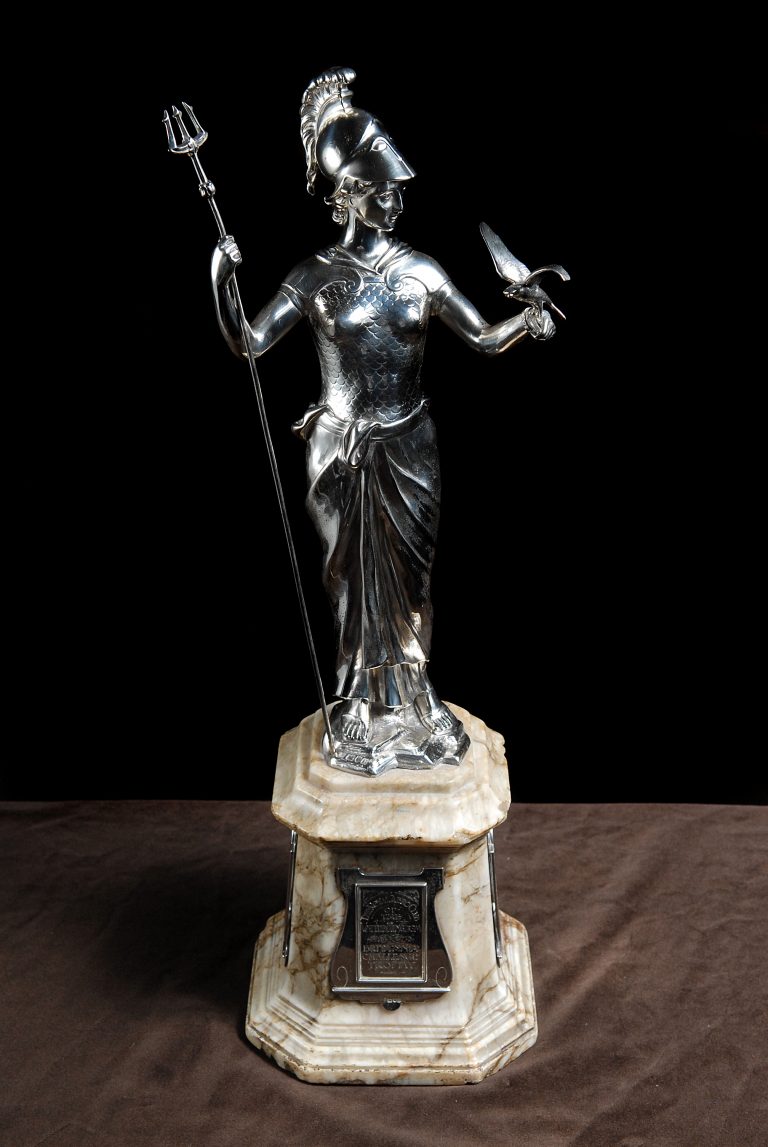
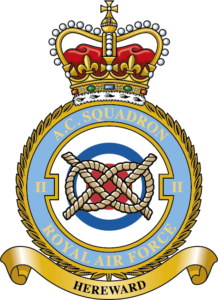 Number 2 Squadron is the most senior of all Royal Air Force squadrons, having been founded at Farnborough, Hampshire, England, 13 May 1912. At the time the squadron was also known as No. II (Army Co-operation) Squadron.
Number 2 Squadron is the most senior of all Royal Air Force squadrons, having been founded at Farnborough, Hampshire, England, 13 May 1912. At the time the squadron was also known as No. II (Army Co-operation) Squadron.
Montrose Aerodrome, now known as RAF Montrose, was the first of twelve planned stations for the Royal Flying Corps. It was originally located at Upper Dysart Farm in Forfarshire, on the eastern shoreline of Scotland.
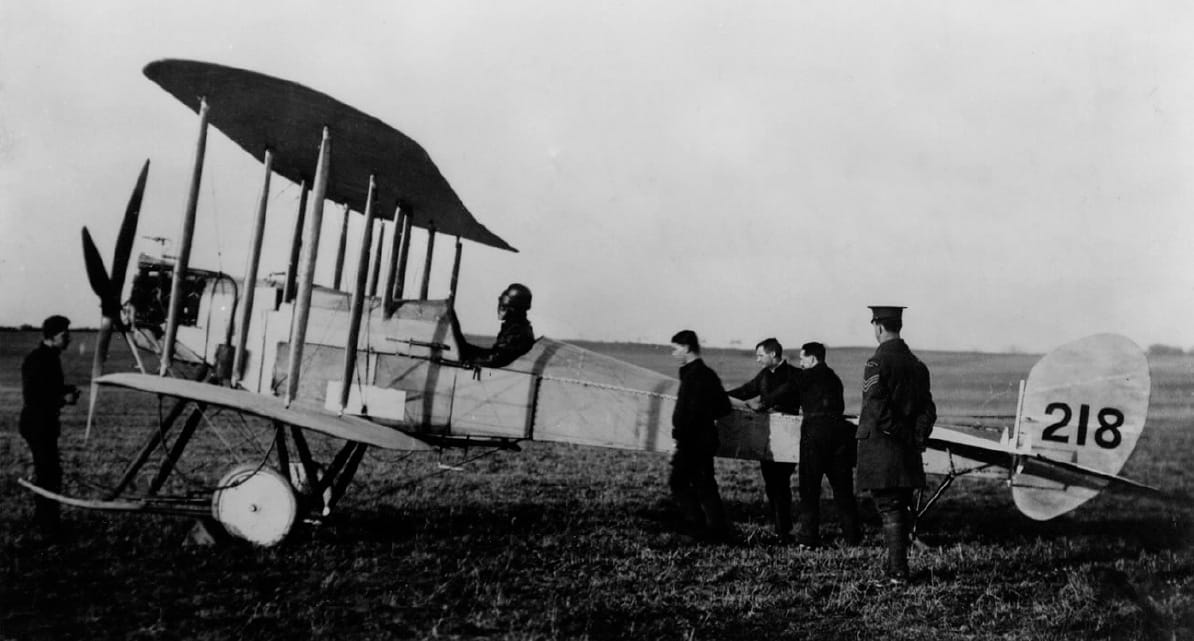
Captain Longcroft’s B.E.2.a., number 218, was built by British & Colonial Aeroplane Company (later, Bristol) at Filton, South Goucestershire, under order number A1147. It was delivered to the R.F.C. on 2 November 2013.
The B.E.2.a was slightly modified with the addition of a windscreen and a fuel tank with a capacity of 54 Imperial gallons (245 liters), “and special oiling arrangements.”
The Royal Aircraft Factory B.E.2.a (which stands for Blériot Experimental, meaning that it was a tractor-type airplane, which had been developed by Louis Blériot) was designed by Geoffrey de Havilland. It was a two-place, single-engine, two-bay biplane which was used as a trainer, reconnaissance aircraft, artillery spotter or bomber. An observer occupied the forward cockpit and the pilot was aft.
The fuselage was constructed of a wooden framework, cross-braced with wires. The wings had wood spars and ribs. The airframe was covered in doped fabric. The B.E.2.a used wing-warping for roll control.This would be changed to ailerons for the B.E.2.b.
The wings of the 2.a and 2.b were straight with no dihedral. Both upper and lower wings had the same span and chord, and were not staggered. (The B.E.2.c added both dihedral and stagger.) The lower wing spars were connected through the fuselage with steel tubing. The landing gear had both wheels and tires, but also wood-covered steel tube skids extending forward to protect the propeller from contacting the ground.
The B.E.2.a–2.b was 29 feet, 6½ inches (9.004 meters) long with a wingspan of 38 feet, 7½ inches (11.773 meters). The wings’ chord was 6 feet, 4 inches (1.930 meters). It had an empty weight of 1,274 pounds (578 kilograms) and gross weight of 1,600 pounds (726 kilograms).
The B.E.2, B.E.2.a and B.E.2.b were powered by an air-cooled, normally-aspirated 6.949 liter (424.036 cubic inch) Renault Type WB side-valve 90° V-8 engine with two valves per cylinder and a compression ratio of 4.12:1. The WB was rated at 70 horsepower at 1,750 r.p.m. The engine drove a four-bladed, fixed-pitch wooden propeller at one-half crankshaft speed. The Renault WB was 3 feet, 9.5 inches (1.556 meters) long, 2 feet, 8.8 inches (0.833 meters) high and 2 feet, 5.8 inches (0.757 meters) wide. It weighed 396 pounds (180 kilograms).
The airplane had a maximum speed of 70 miles per hour (113 kilometers per hour) at Sea Level and 65 miles per hour (105 kilometers per hour) at 6,500 feet (1,981 meters). It could climb to 3,000 feet (914 meters) in 9 minutes and to 7,000 feet (2,134 meters) in 35 minutes. The service ceiling was 10,000 feet (3,048 meters). Maximum endurance was 3 hours.
Although designed by the Royal Aircraft Factory, Farnborough, only 6 B.E.2s were built there. The remainder were built by Armstong Whitworth, British and Colonial Airplane Co., Coventry Ordnance Works, Handley Page, Hewlett and Blondeau, and Vickers.
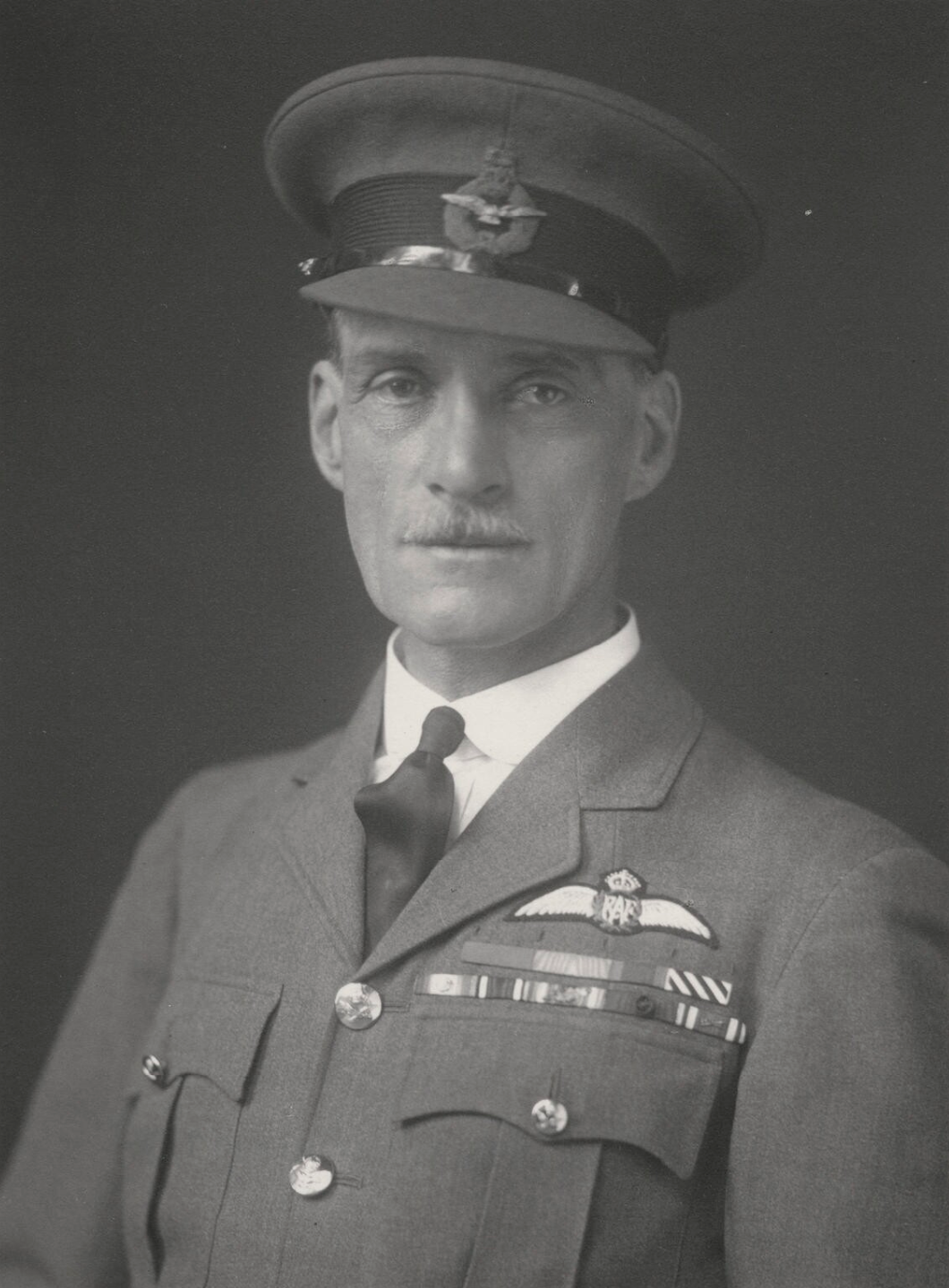
Air Vice-Marshal Sir Charles Alexander Holcombe Longcroft, K.C.B., C.M.G., D.S.O., A.F.C., Royal Air Force, was born Llanarth, Cardiganshire, Wales, 13 May 1883. He was the third of four children of Charles Edward Longcroft and Catherine Alicia Holcombe Longcroft. Charles was educated at Charterhouse, a private boarding school (for some incomprehensible reason, known in England as a “public school”) in Goldalming, Surrey, England. He then attended the Royal Military Academy Sandhurst.
C.A.H. Longcroft was commissioned as a second lieutenant in the Welsh Regiment of the British Army, 2 May 1903. From 1904 to 1906, he served in India. Returning to the United Kingdom, he was promoted to the rank of lieutenant, 13 December 1906. He then deployed to South Africa until 1909.
On 5 March 1912, Lieutenant Longcroft was issued an aviator’s certificate (H192) by the Royal Aero Club of the United Kingdom.
After volunteering, on 10 April 1912 Lieutenant Longcroft was assigned to the Air Battalion, Royal Engineers. The unit operated lighter-than-air craft. The following month, 13 May 1912, he was “seconded” (temporarily transferred for duties outside of his normal unit) to the newly established Royal Flying Corps. On 1 July 1912, Lieutenant Longcroft was appointed a Flying Officer, R.F.C. On 20 November 1912, he was assigned as a flight commander, No. 2 Squadron, at Farnborough and Montrose. On that same day, he was promoted to the temporary rank of captain. That rank became permanent 13 August 1913.
Captain Longcroft was promoted to the temporary rank of major, 1 May 1914, and assigned as the commanding officer No. 1 Squadron at Farnborough, which, after the start of World War I, served on the Western Front. His new rank became permanent two months later (22 June). On 19 October 1914, Longcroft was Mentioned in Dispatches.
Major Longcroft became the commanding officer of No. 4 Squadron 29 January 1915. On 18 August 1915 he was promoted to the temporary rank of lieutenant-colonel. He was reassigned to command the Training Wing.
The Imperial House of Romanov (the reigning house of Imperial Russia) awarded Major Longcroft the Order of St. Staninslas (Орденъ Св. Станислава), 3rd Class with Swords, 25 August 1915.
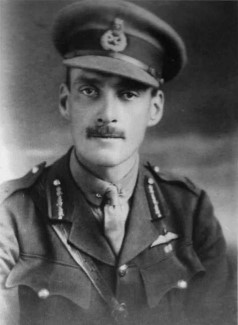
On 28 August 1916, Colonel Longcourt was promoted to the temporary rank of brigadier-general. He was placed in command of 2nd (Corps) Wing, R.F.C. (His permanent rank of lieutenant-colonel was effective 1 January 1917.) Next, on 18 October 1917, Longcroft was promoted to temporary major-general. He was next assigned as General Officer Commanding, Training Division.
France appointed him an Officier de la Ordre national de la Légion d’honneur in 1917.
On 1 April 1918, the Royal Flying Corps and Royal Naval Air Service were combined to form the Royal Air Force (R.A.F.). Major-General Longcroft was transferred from the British Army to the R.A.F. and attached to III Brigade. While retaining that temporary rank, his permanent rank of lieutenant-colonel was confirmed and he was immediately promoted to the permanent rank of colonel. On 29 April, he was advanced once again to the temporary rank of brigadier-general, and assigned as General Officer Commanding, III Brigade.
In the New Year’s Honours List, 1 January 1918, Brigadier-General Longcroft was awarded the Distinguished Service Order (D.S.O.) for service under fire.
For his service during World War I, Brigadier-General Longcroft was awarded the Distinguished Service Order; the Air Force Cross; the 1914 Star with Clasp; the British War Medal, and the Victory Medal. He was also appointed a Companion of the Most Distinguished Order of St. Michael and St. George (C.M.G.) by King George V.
On 1 May 1919, Temporary Brigadier-General Longcroft was promoted to the rank of acting brigadier-general.
The new R.A.F. changed to a new system of officer ranks. On 1 August 1919, Longcroft resigned his commission in the Welsh Brigade to accept a commission in the R.A.F. Acting Brigadier-General Longcroft became Group Captain Longcroft. Four days later, 5 August, he was promoted to Air Commodore.

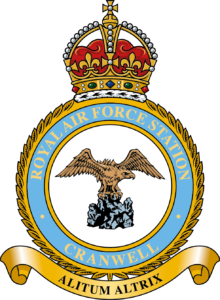 Air Commodore Longroft became the first commandant of the newly established R.A.F. College at Cranwell. The first cadets arrived 5 February 1920. His command consisted of 56 officers, 516 airmen, 200 cadets, 1 headmaster and 8 schoolmasters.
Air Commodore Longroft became the first commandant of the newly established R.A.F. College at Cranwell. The first cadets arrived 5 February 1920. His command consisted of 56 officers, 516 airmen, 200 cadets, 1 headmaster and 8 schoolmasters.
Air Commodore Longcroft married Mrs. William Duncan Hepburn (née Marjory McKerrell-Brown) at St. Paul’s Church, Portman Square, London, 27 April 1921. The ceremony was officiated by Squadron Leader the Reverend Bernard William Keymer, O.B.E., R.A.F. Mrs. Hepburn was the widow of Captain W. D. Hepburn, Seaforth Highlanders, British Army. The Longcrofts would have a son, Charles McKerrell Longcroft, born in 1926. (Squadron Leader Keymer was one of the first chaplains at RAF Cranwell, and is credited with creating the school’s motto, Superna Petimus—”We seek things that are above.”)
King George V appointed Air Commodore Charles Alexander Holcombe Longcroft, C.M.G., D.S.O., A.F.C., Royal Air Force, to be an Ordinary Member of the Military Division of the Third Class, of the Most Honourable Order of the Bath (C.B.), 2 June 1923.³
On 9 October 1923, Air-Commodore Longcroft was placed on the Half-Pay List. Shortly after, 10 December, he was appointed Director of Personal Services.
Air Commodore Longcroft was advanced to the rank of air vice-marshal, 1 July 1925.
On 1 November 1926, Air Vice-Marshal Longcroft became Air Officer Commanding, Inland Area.
Longcroft retired from the Royal Air Force at his own request, 2 November 1929.
On 15 November 1932, King George V appointed Air Vice-Marshal Longcroft, C.B., C.M.G., D.S.O., A.F.C. (retired) to be Gentleman Usher of the Scarlet Rod of the Most Honourable Order of the Bath.³ In 1948, he became Secretary and Registrar of the Order.⁴
On 9 June 1938, King George VI invested him Knight Commander of the Military Division of the Most Honourable Order of the Bath (K.C.B.).
Air Vice Marshal Sir Charles Alexander Holcombe Longcroft, K.C.B., C.M.G., D.S.O., A.F.C., Royal Air Force, died 20 February 1958 at London. He was 74 years of age.
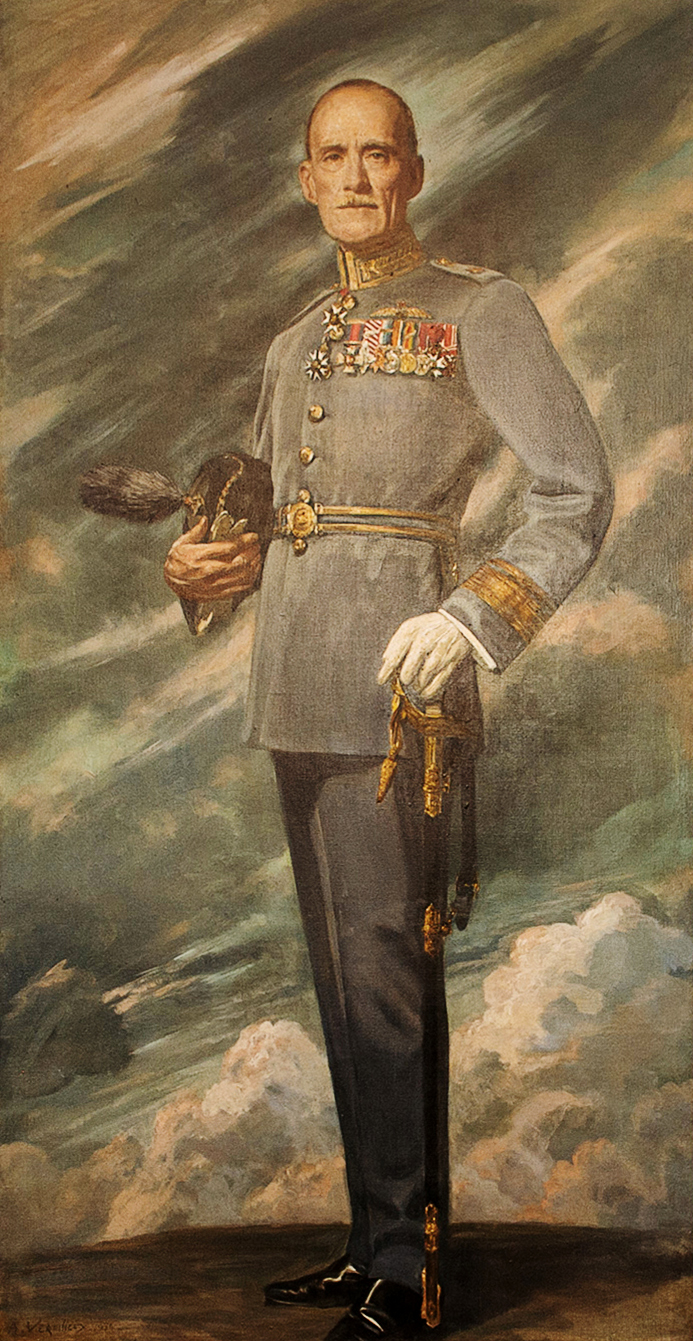
¹ Lincolnshire Echo, No. 6431, Monday, 24 November 1913, Page 3, Column 5. Some sources state the distance was 445 miles (716 kilometers) in 7 hours, 20 minutes.
² FAI Record File Number 15378
³ Supplement 32830 to the London Gazette, 2 June 1923, Page 3945
⁴ Supplement 33883 of the London Gazette, 15 November 1932 at Page 7260.
© 2023, Bryan R. Swopes
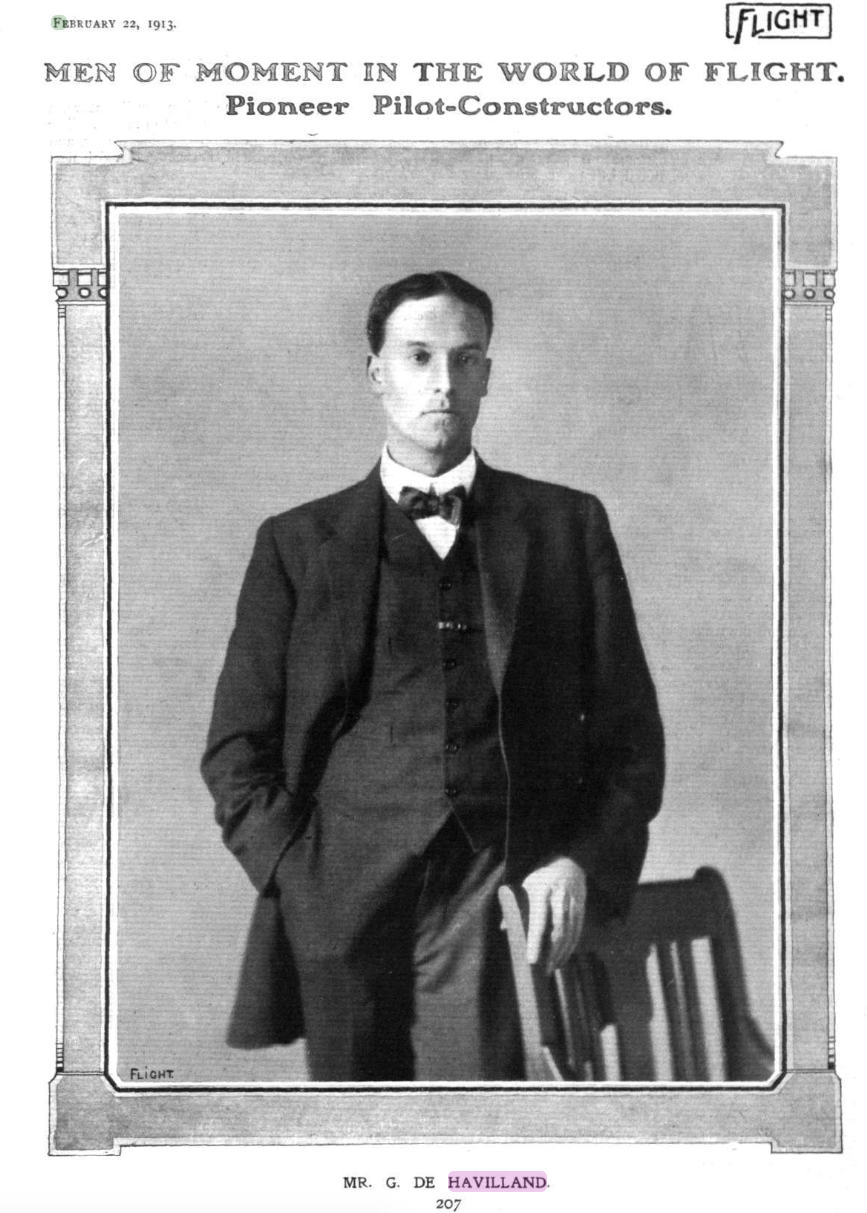
18 August 1911: At 6:30 a.m., the Royal Aircraft Factory F.E.2 prototype took off with its designer, Geoffrey de Havilland,¹ at the controls. He made the short flight from Farnborough to Laffan’s Plain where he made a series of takeoffs and landings.
The airplane was a single-engine, two-place, two-bay biplane with a pusher propeller. The crew, a pilot and an observer/gunner, were in an open nacelle, with the engine aft, and an open tail boom.
The F.E.2 was 28 feet (8.5 meters) long with a wing span of 33 feet (10.0 meters). The total wing area was 340 square feet (31.6 square meters). It weighed 1,200 pounds (544 kilograms), loaded, and had a maximum speed of 47.5 miles per hour (76.4 kilometers per hour). The F.E.2 prototype, in its original configuration, was powered by an air-cooled Gnome 7-cylinder rotary engine which produced 50 horsepower.
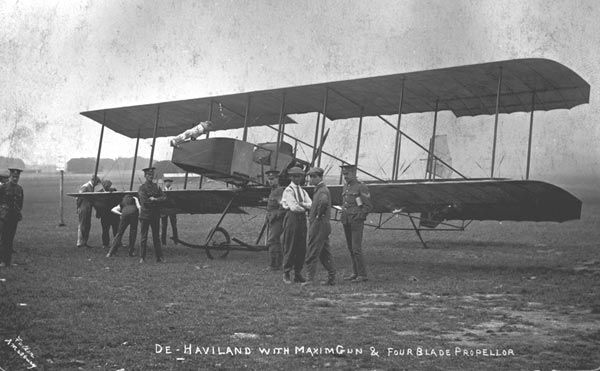
In 1913, the F.E.2 prototype was redesigned and rebuilt with an air-cooled Renault V-8 engine, rated at 70 horsepower, driving a four-bladed fixed-pitch propeller. The wings were identical to those of the the B.E.2A. The Renault-powered F.E.2 variant was 30 feet, 0 inches (9.144 meters) long with a wingspan of 42 feet, 0 inches (12.802 meters). The wings had a chord of 6 feet, 4 inches (1.930 meters). The wing area increased to 425 square feet (39.5 square meters). The gross weight was now 1,865 pounds (846 kilograms). The F.E.2 (Renault) had a maximum speed of 67 miles per hour (108 kilometers per hour) and a service ceiling of 5,500 feet (1,676 meters).
At about 11:45 a.m., Monday, 23 February 1914, test pilot Roland Campbell Kemp (R.Ae.C. Aviator’s Certificate No. 80) was flying the F.E.2 at about 500 feet (152 meters). Also on board was a passenger, Ewart Temple Haynes. The wind was estimated at 30 miles per hour (13 meters per second). After about five minutes, the prototype entered a steep—but not heavily banked—right-hand spiral descent and crashed near Wittering, Chichester. The airplane “was completely wrecked.” Haynes was killed. Kemp was seriously injured and had no memory of the day.
The Accidents Investigation Committee of the Royal Aero Club was “of the opinion that there is no positive evidence to show why the accident occurred, but such evidence as is available points to the conclusion that the most probable cause was that the pilot’s foot slipped over the rudder bar, and that he thus lost control.” ²
After another redesign, the first production variant of de Havilland’s biplane was the F.E.2A, a three-bay biplane with a water-cooled Green six-cylinder inline engine, rated at 100 horsepower. This airplane was 32 feet, 3 inches (10.135 meters) long, with a wingspan of 47 feet, 8 inches (14.529 meters). The chord was decreased to 5 feet, 6 inches (1.676 meters). The F.E.2A’s gross weight was 2,680 pounds (1,216 kilograms). It had a maximum speed of 75 miles per hour (121 kilometers per hour) and ceiling of 6,000 feet (1,829 meters). Twelve F.E.2As were built.
Modified for a 120 horsepower Beardmore 6-cylinder engine with a 9-foot-diameter propeller (2.7 meters), the airplane was designated F.E.2B, or Fighter Mark I. The wingspan increased 1 inch to 47 feet, 9 inches (14.554 meters). The airplane had an overall height of 12 feet, 7½ inches (3.848 meters). The wings had a 3° 30′ angle of incidence and were not staggered. There was 4° dihedral. Gross weight increased to 2,827 pounds (1,282 kilograms). Its maximum speed was 73 miles per hour (117 kilometers per hour), and the service ceiling was 9,000 feet (2,743 meters). These were first used in France during World War I.
The B.E.2B was also built with a 160 horsepower Beardmore engine. The series continued with the F.E.2C and a Rolls-Royce powered F.E.2D. Dimensions remained constant, though the angle of incidence was increased to 4°.
The F.E.2 and F.E.2.A were armed with Maxim machine guns. The B.E.2B and later models had one or two .303-caliber Lewis guns.
A total of 1,939 F.E.s were built.
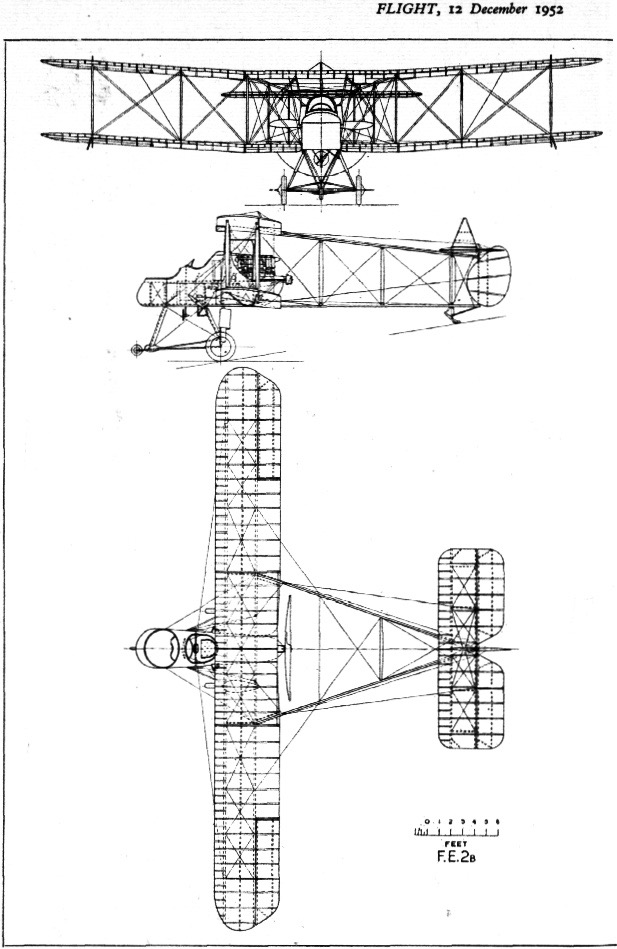
The Royal Flying Corps initially used the F.E.2 (most sources say that “F.E.” stood for Farnham Experimental, ³ meaning that it was a pusher configuration) as a scouting and reconnaissance airplane.
On 16 October 1912, Geoffrey de Havilland was appointed Second Lieutenant (on probation), Royal Flying Corps, Military Wing, antedated to 2 September 1912. He was promoted to Lieutenant, 5 August 1914. Captain de Havilland was appointed Officer of the Most Excellent Order of the British Empire (O.B.E.), 7 June 1918. He was awarded the Air Force Cross, 1 January 1919.
De Havilland soon founded his own aircraft design and manufacturing company, the de Havilland Aircraft Company. He would later be known as Captain Sir Geoffrey de Havilland, O.M., C.B.E., A.F.C., R.D.I., F.R.Ae.S.
¹ Many sources, including The Peerage, Person Page – 55358, identify Sir Geoffrey as “Geoffrey Raoul de Havilland.” As his son is known as Geoffrey Raoul de Havilland, Jr., that would seem reasonable, and may even be correct. However, his birth registration (England & Wales Civil Registration Birth Index, January, February, and March 1883, at Page 149, Column 1), marriage banns and certificates for both marriages, numerous announcements in The London Gazette, contemporary news articles, and his civil death registration do not include any middle name.
² Accidents Investigation Committee of the Royal Aero Club, Report No. 26
³ “Fighting Experimental” —J.M. Bruce, M.A., in Flight, No. 2290, Vol. LXII, Friday, 12 December 1952 at Page 728
© 2018, Bryan R. Swopes
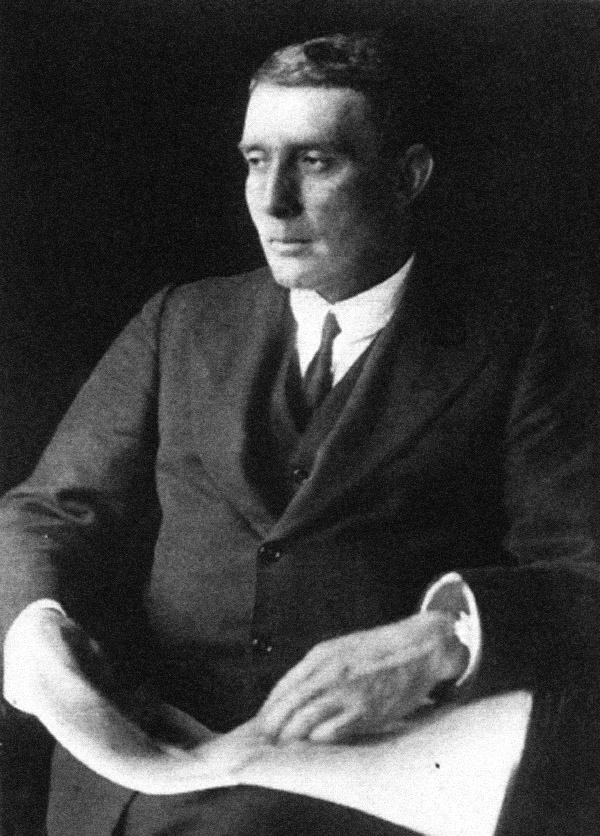
10 August 1912: Frank McLean (later, Lieutenant Colonel Sir Francis Kennedy McLean, A.F.C.) flew his modified Short S.33 float plane, and, according to his obituary in the London Times, 12 August 1955, “. . . created a record by flying up the Thames in a seaplane, passing between the upper and lower parts of Tower Bridge and under London Bridge without touching the water.”
The vertical distance between the upper walkways and the deck of the draw bridge is 141 feet, 0 inches (42.977 meters).
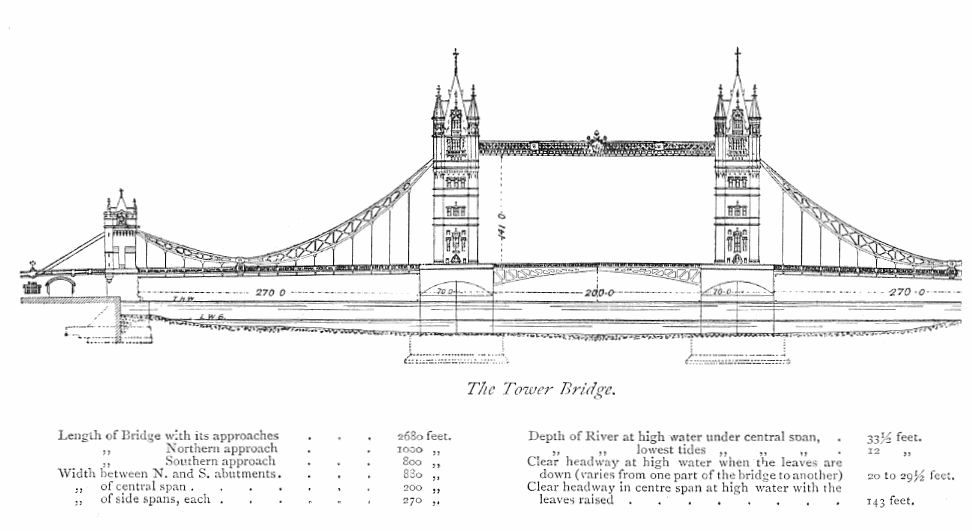
Flight reported the event:
By Hydro-aeroplane up the Thames
ALTHOUGH London was deprived by the appalling weather of the sight of M. Beaumont piloting his hydro-aeroplane up the Thames, the visit of Mr. F.K. McClean more than compensated for the loss. Remembering an appointment in town on Saturday morning, Mr. McClean thought it would be a good idea to come up on his Short machine, and so at 6 a.m. he had it out of its shed at Harty Ferry, in the Isle of Sheppey, and after seeing everything in order he started off. Following the coast round Leysdown, Warden Point to Sheerness, he continued over the Thames. At Gravesend the smoke of various factories rather troubled the aviator but he made good progress. Approaching London Mr. McClean brought his machine lower down and negotiated the Tower Bridge between the lower and upper spans, but the remaining bridges to Westminster he flew underneath, the water just being touched at Blackfriars and Waterloo bridges. He reached Westminster about 8.30 and was taken ashore to Westminster Pier on a Port of London Launch.
The return journey on Sunday afternoon was not so successful—owing to restrictions as to rising from the water which had been imposed by the police. The bridges had all been safely negotiated, and when near Shadwell Basin Mr. McClean started to manœuver to get into the air at the point designated by the river authorities. He had made one circuit when the machine side-slipped, and either through hitting a barge or by sudden contact with the water one of the floats was damaged. The machine was then towed into Shadwell Dock, this operation being superintended by Mr. McClean from the driving seat, and dismantled for its return by road to Eastchurch.
—FLIGHT, No. 190. (No. 33, Vol. IV.) 17 August 1912 at Page759, Column 1
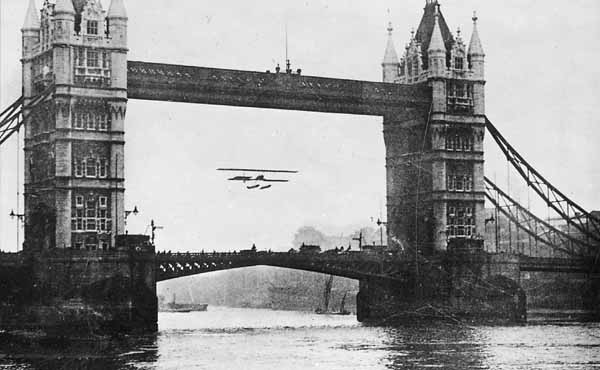
The Short S.33 was a variant of the S.27 biplane, built specifically for McLean. It is a two-place, single-engine four-bay biplane with the engine in a pusher configuration. An elevator is forward. Although it had been fitted with two floats for operating from the water, McLean had it converted to a land plane by installing two wheels on a tube axle attached to the lower wing with four struts. Two wooden skids are also installed. The fuselage is an open rectangular framework. At the aft end is a horizontal stabilizer and elevator, and two rudders. There were two tail skids.
The Short S.33 was 36 feet, 0 inches (10.973 meters) long (following conversion) with an upper wingspan of 70 feet, 6 inches (21.488 meters). The upper wing had a maximum chord of 6 feet, 7 inches. The outer 16 feet (4.877 meters) of the upper wing was swept aft and had a slight dihedral, as did the outer panels of the lower wings. The lower wing had a shorter wingspan and narrower chord—5 feet, 9 inches (1.753 meters)—than the upper wing. The biplane had a gross weight of 1,600 pounds (725.75 kilograms)
The S.33 was powered by an air-cooled 10.292 liter (628.048-cubic-inch-displacement) Société des Moteurs Gnome Gamma 7-cylinder rotary engine producing 70 horsepower at 1,200 r.p.m. It turned a two-bladed, fixed-pitch wooden propeller with a diameter of 8 feet, 6 inches (2.591 meters) through direct drive.
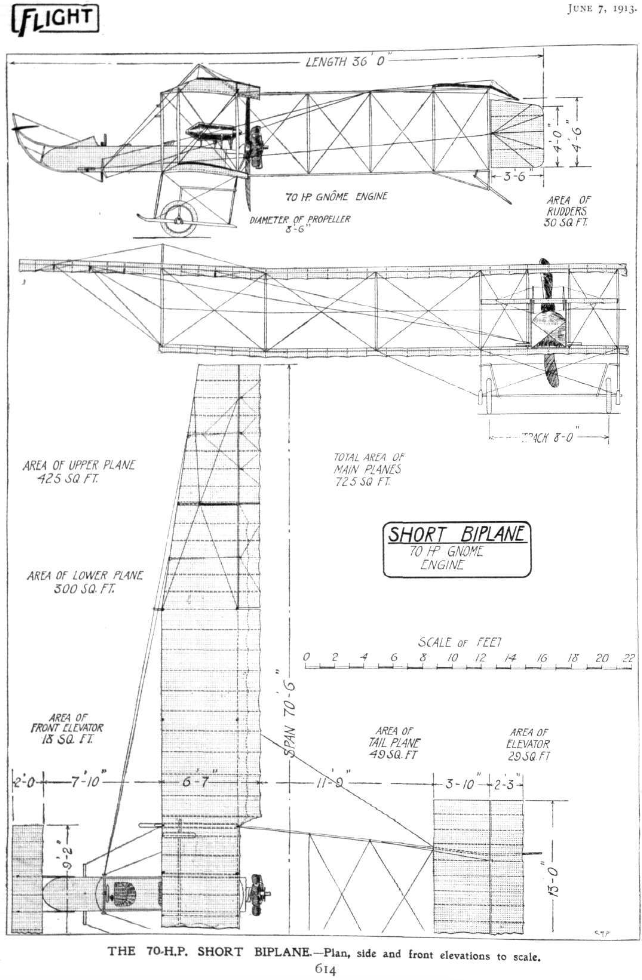
Sir Francis was a civil engineer, astronomer, pioneering photographer and aviator. He received the Royal Aero Club’s Aviator Certificate Number 21 on 20 September 1910.
McLean served in the Royal Naval Air Service during World War I and became an officer of the Royal Air Force when RNAS and the Royal Flying Corps were combined in 1918. He is considered to be the founder of the Fleet Air Arm. McLean was decorated with the Air Force Cross in 1919.
For his services to aviation, McLean was knighted by George V, 3 July 1926 and later appointed High Sheriff of Oxfordshire.
Sir Francis McLean died 11 August 1955 at London, England, after a lengthy illness. He was 79 years old.
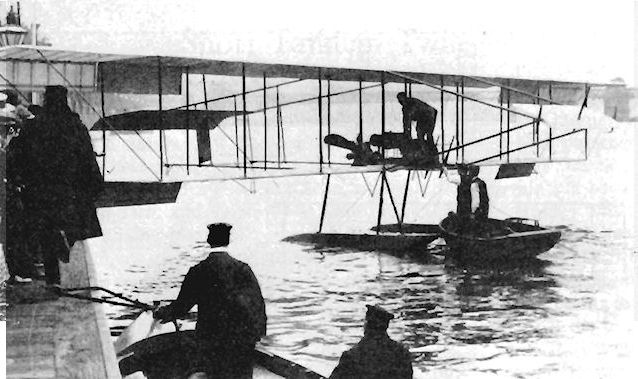
© 2017, Bryan R. Swopes